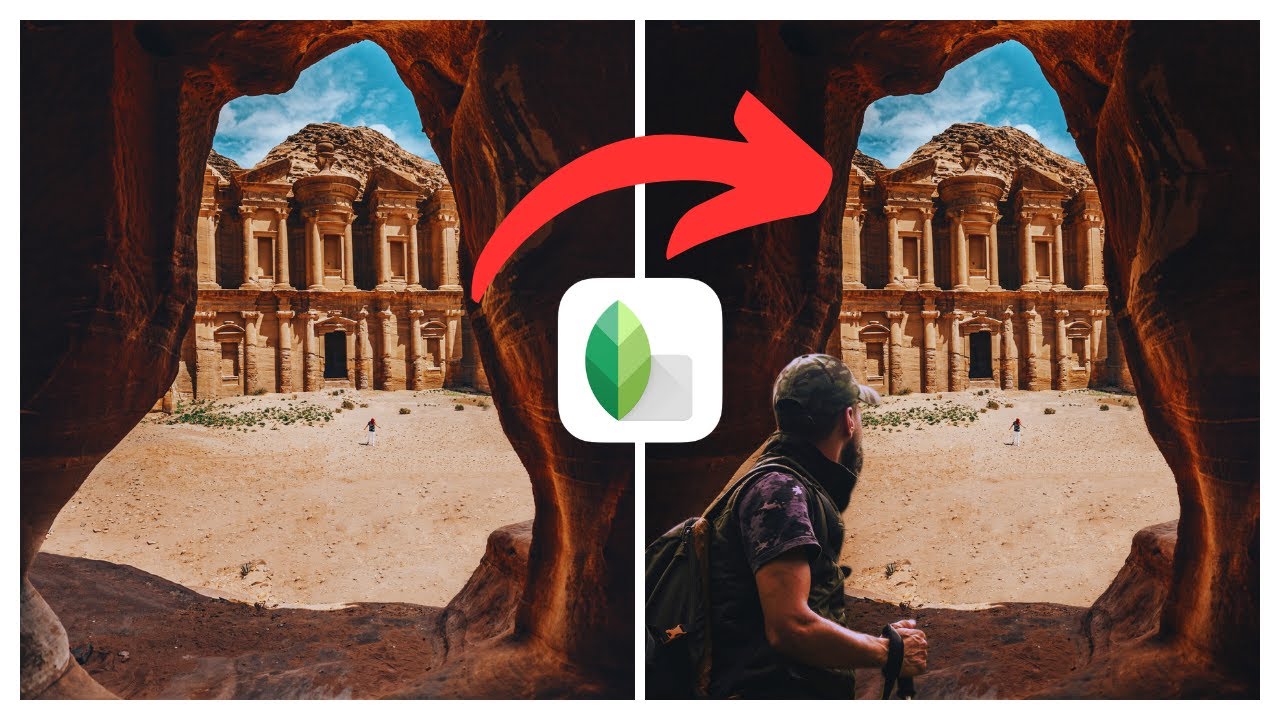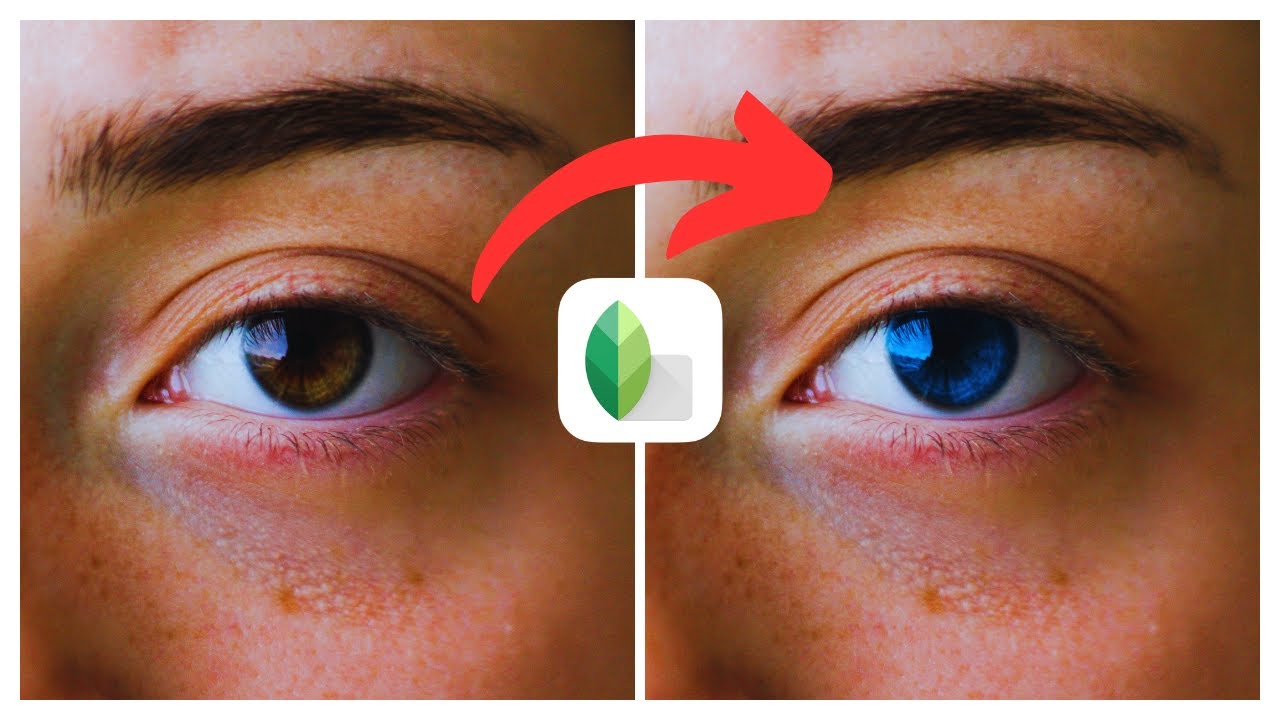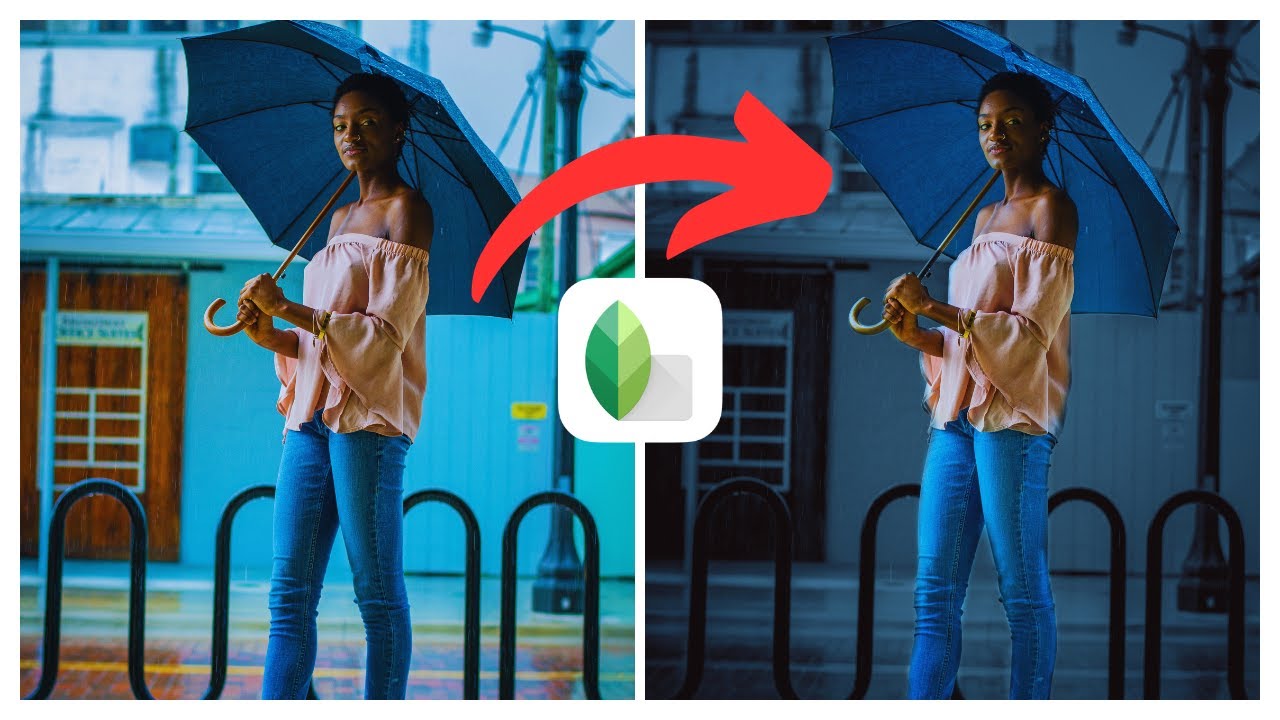“How to Change Background in Snapseed | (iOS & Android)” is a comprehensive video tutorial presented by Media Magnet Guide. In this tutorial, you will discover the step-by-step process of changing the background of your photos using the popular photo editing app, Snapseed. By following these instructions, you can add a creative twist to your images and elevate your photography game.
Snapseed, developed by Google, is a powerful and user-friendly photo editing app that offers a wide range of editing tools and filters. From simple adjustments to advanced editing techniques, this app provides creative freedom for both iOS and Android users. By learning how to change the background in Snapseed, you can enhance and transform your photos with ease, making your images truly stand out. Don’t miss out on this opportunity to take your photography skills to the next level!
Understanding Snapseed

Overview of Snapseed
Snapseed is a powerful and user-friendly photo editing app developed by Google. It is packed with a wide range of editing tools and filters, allowing users to enhance and transform their photos with ease. Whether you are a professional photographer or just someone looking to level up their photography game, Snapseed offers creative freedom and professional-quality editing features.
Developers and owners of Snapseed
Snapseed was initially developed by Nik Software, a company known for its high-quality imaging software. In September 2012, Google acquired Nik Software and subsequently released Snapseed as a free app on both iOS and Android platforms. Today, Snapseed is owned and maintained by Google, ensuring regular updates and improvements to the app.
Purpose and use of Snapseed
Snapseed aims to provide users with a professional-level photo editing experience on their mobile devices. It offers a wide range of editing tools and filters that can be used to enhance, correct, and creatively transform images. Whether you want to make simple adjustments like brightness and contrast or dive into more advanced techniques like selective editing and background changes, Snapseed has you covered.
Setting Up Snapseed
How to download and install Snapseed on iOS
To download and install Snapseed on iOS, follow these steps:
- Open the App Store on your iOS device.
- Search for “Snapseed” in the search bar.
- Tap on the Snapseed app from the search results.
- Tap the “Get” button next to the app.
- Authenticate with your Apple ID, if prompted.
- Wait for the app to download and install on your device.
- Once the installation is complete, you can find the Snapseed app on your home screen.
How to download and install Snapseed on Android
To download and install Snapseed on Android, follow these steps:
- Open the Google Play Store on your Android device.
- Tap on the search bar at the top of the screen.
- Type “Snapseed” and tap the search icon.
- Tap on the Snapseed app from the search results.
- Tap the “Install” button.
- Wait for the app to download and install on your device.
- Once the installation is complete, you can find the Snapseed app in your app drawer.
Navigating Snapseed for the first time
When you first open Snapseed, you will be greeted with a clean and user-friendly interface. The main screen displays your photo gallery, where you can access and edit your pictures. To select a photo to edit, simply tap on it.
At the bottom of the screen, you will find the editing tools and filters available in Snapseed. These tools are organized into different categories, such as “Tune Image,” “Details,” “Crop,” and more. To access a specific editing tool, simply tap on its icon.
In addition to the editing tools, Snapseed also offers various gestures and controls to make your editing process seamless. For example, you can pinch to zoom in on your photo, swipe left or right to access different editing tabs, and use sliders to adjust the intensity of the applied edits.
Importing Pictures into Snapseed
Importing pictures from phone gallery
To import pictures from your phone gallery into Snapseed, follow these steps:
- Open Snapseed on your device.
- Tap on the photo gallery icon at the bottom of the screen.
- Select the folder or album containing the picture you want to import.
- Tap on the desired picture to open it in Snapseed for editing.
Snapseed supports various image formats, including JPEG, PNG, and RAW files. You can import single or multiple pictures at once, depending on your needs.
Importing pictures from cloud storage
Snapseed also allows you to import pictures from cloud storage services like Google Drive and Dropbox. To import pictures from cloud storage, follow these steps:
- Open Snapseed on your device.
- Tap on the photo gallery icon at the bottom of the screen.
- Tap on the “Cloud” or “Cloud Storage” option.
- Select the cloud storage service you want to import from.
- Authenticate with your account credentials, if prompted.
- Navigate to the desired folder or album.
- Tap on the picture you want to import to open it in Snapseed for editing.
By importing pictures from cloud storage, you can access and edit your photos even if they are not physically stored on your device.
Troubleshooting common picture import problems
If you encounter any issues when importing pictures into Snapseed, here are some troubleshooting tips you can try:
-
Check your internet connection: Make sure you have a stable internet connection, especially when importing pictures from cloud storage.
-
Update Snapseed: Ensure that you are using the latest version of Snapseed. Outdated versions may have compatibility issues with certain file formats or cloud storage services.
-
Restart the app: Close and reopen Snapseed to refresh the app and resolve any temporary glitches.
-
Clear cache: If you are experiencing persistent import issues, you can try clearing the cache of the Snapseed app. This can be done through your device’s settings or within the app itself, depending on your device and operating system.
If these troubleshooting steps do not resolve the problem, you may need to seek further assistance from the Snapseed support team or consult online forums for specific solutions.
Exploring Editing Tools in Snapseed
List of editing tools available in Snapseed
Snapseed offers a wide range of editing tools to enhance and transform your photos. Here are some of the key tools available in Snapseed:
-
Tune Image: Allows you to adjust the brightness, contrast, saturation, highlights, shadows, and other aspects of the image.
-
Details: Enhances the details and sharpness of the image, allowing you to fine-tune the clarity, structure, and sharpening.
-
Crop: Lets you crop and straighten the image, as well as apply various aspect ratios and perspectives.
-
Healing: Allows you to remove unwanted objects or blemishes from the image seamlessly.
-
Vintage: Applies vintage-inspired filters to give your image a retro look and feel.
-
Drama: Adds drama and impact to your photos by enhancing the tones and textures.
-
Grunge: Creates a grungy and edgy effect on your photos, perfect for achieving a unique and artistic look.
-
Lens Blur: Simulates the depth of field effect, allowing you to blur the background and focus on a specific subject.
These are just a few examples of the editing tools available in Snapseed. The app offers a comprehensive set of tools and filters to cater to various editing needs and creative preferences.
How to select a specific editing tool
To select a specific editing tool in Snapseed, follow these steps:
- Open Snapseed and select the desired picture to edit.
- At the bottom of the screen, you will find a row of icons representing different editing tools.
- Swipe left or right to scroll through the available tools.
- Tap on the icon of the desired editing tool to access its settings and adjustments.
Once you have selected an editing tool, you can use the various sliders, controls, and options to apply the desired changes to your photo. Experiment with different tools and adjustments to achieve the desired look and feel for your image.
Understanding Background Change in Snapseed
When to use the background change feature
The background change feature in Snapseed allows you to replace the existing background of your photo with a new one. This can be useful in various situations, including:
-
Removing distractions: If the original background of your photo contains unwanted elements or distractions, you can use the background change feature to replace it with a cleaner and more visually appealing background.
-
Creating composite images: By changing the background of your photo, you can create composite images by combining different subjects or elements from separate photos.
-
Enhancing storytelling: Changing the background can help enhance the storytelling aspect of your photos, allowing you to create a specific mood or emphasize the subject of the image.
What happens during a background change
During a background change in Snapseed, the app uses advanced algorithms and selection tools to separate the foreground subject from the original background. It then allows you to replace the background with a new image of your choice.
The background change feature in Snapseed is designed to provide accurate and seamless results, but it may not be perfect in every situation. Depending on the complexity of the photo and the foreground subject, you may need to make manual adjustments or refine the selection to achieve the desired outcome.
Step-by-Step Guide to Change Background in Snapseed
Selecting the picture to edit
Before changing the background in Snapseed, you need to select the picture you want to edit. Follow these steps:
- Open Snapseed on your device.
- Tap on the photo gallery icon at the bottom of the screen.
- Browse through your photo gallery and select the picture you want to edit.
Make sure the picture you choose has a clear and distinct foreground subject that you want to keep while changing the background.
Opening the editor and selecting the right tool
Once you have selected the picture, follow these steps to open the editor and select the background change tool:
- With the picture open in Snapseed, tap on the pencil icon at the bottom of the screen to enter the editing mode.
- Swipe left or right to access the different editing tools.
- Locate and tap on the “Double Exposure” tool. This tool allows you to change the background of your photo.
Choosing and applying a new background
To choose and apply a new background to your photo, follow these steps:
- With the “Double Exposure” tool open, tap on the “Image” icon to select a new background image.
- Browse through your photo gallery or cloud storage to find the image you want to use as the new background.
- Once you have selected the background image, use the sliders and controls provided to adjust the opacity and blending mode of the new background.
- Make additional adjustments, if necessary, to ensure a seamless integration between the foreground subject and the new background.
Saving and exporting the edited picture
After changing the background and making the desired adjustments, you can save and export the edited picture. Follow these steps:
- Tap on the checkmark icon or the save button to apply the changes and exit the editor.
- Choose the desired quality and file format for the edited picture.
- Tap on the save button to save the edited picture to your device’s gallery.
The edited picture is now ready to be shared or further enhanced using other editing tools or apps.
Fixing Common Issues with Background Change in Snapseed
Addressing issues with the selection tool
The selection tool in Snapseed plays a crucial role in accurately separating the foreground subject from the background during a background change. However, in some cases, you may encounter issues with the selection tool. Here are some troubleshooting tips:
-
Refine the selection: If the selection tool fails to accurately capture the foreground subject, you can use the “Brush” or “Eraser” tool to manually refine the selection. Zoom in on the image for better precision and take your time to carefully paint over or erase the areas that need adjustment.
-
Adjust brush size and opacity: The brush size and opacity settings can significantly impact the accuracy of the selection. Experiment with different brush sizes and opacity levels to achieve the best results for your image.
-
Use masking techniques: In complex situations where the foreground subject has intricate details or fine edges, you can try using masking techniques to achieve a more precise selection. This involves creating a layer mask and manually painting over the areas that need to be included or excluded from the selection.
Solving distorted image problems
Sometimes, when changing the background in Snapseed, you may notice distortion or stretching in certain areas of the image. This can occur when the foreground subject is not properly aligned with the new background. Here’s how you can address this issue:
-
Adjust the perspective: Use the “Perspective” or “Transform” tool in Snapseed to correct any perspective distortion or alignment issues. This tool allows you to straighten the lines and adjust the overall geometry of the image.
-
Scale and resize: If the foreground subject appears too small or large in relation to the new background, you can use the “Transform” tool to scale and resize the subject. This will help create a more balanced composition and minimize any distortions.
-
Use blending modes: Experiment with different blending modes offered by the “Double Exposure” tool. Certain blending modes can help blend the foreground subject more harmoniously with the new background and reduce any noticeable distortions.
Understanding background compatibility issues
When changing the background in Snapseed, it’s important to consider the compatibility between the new background and the foreground subject. Here are some factors to keep in mind:
-
Lighting and color temperature: Ensure that the lighting and color temperature of the new background match the foreground subject. Mismatched lighting can create unnatural and unconvincing results.
-
Depth and perspective: Consider the depth and perspective in the original image and how it aligns with the new background. A mismatch in depth or perspective can result in an unrealistic composition.
-
Subject-background interaction: Pay attention to how the foreground subject interacts with the new background. Subtle shadows, reflections, or other elements can help create a more convincing and cohesive integration.
By considering these factors, you can achieve a more seamless and natural-looking background change in your photos.
Advanced Tips and Tricks for Changing Background in Snapseed
Using layers for better control
Snapseed allows you to use layers for better control over the background change process. Here’s how you can utilize layers:
- Open the image in Snapseed and go to the editor.
- Tap on the “Stack” icon at the top of the screen to access the layers panel.
- Tap on the “+” icon to add a new layer.
- Use the selection and background change tools to replace the background on the new layer.
- Adjust the opacity and blending mode of the new layer to blend it with the original image.
Using layers gives you the flexibility to make additional adjustments and fine-tune the background change without affecting the original image.
Mixing different backgrounds for unique effects
Instead of replacing the background with a single image, consider mixing different backgrounds to create unique effects. Here’s how you can do it:
- Open the image in Snapseed and go to the editor.
- Use the background change tool to replace the original background with the first image.
- Create a new layer and use the background change tool again to add a different background to the new layer.
- Adjust the opacity and blending mode of each layer to mix the backgrounds and achieve the desired effect.
By mixing different backgrounds, you can create surreal, artistic, or imaginative compositions that go beyond traditional photo editing techniques.
Leveraging undo and redo functions
Snapseed allows you to undo and redo changes during the editing process, including background changes. This feature can be helpful in case you make a mistake or want to compare different edits. Here’s how to use the undo and redo functions:
- With the image open in Snapseed, go to the editor.
- Swipe left or right on the screen with two fingers to undo or redo changes, respectively.
- Keep swiping to navigate through the editing history and return to a specific state of the image.
The undo and redo functions give you the freedom to experiment and make adjustments without the fear of losing your progress.
Snapseed Tutorials and Resources
Best online Snapseed tutorials
To further enhance your skills in using Snapseed and exploring its features, here are some recommended online tutorials:
-
YouTube: Search for Snapseed tutorials on YouTube to find a wide range of video tutorials that cover various aspects of the app. Many content creators offer step-by-step guides, tips, and creative techniques to help you master Snapseed.
-
Online forums and communities: Join online forums and communities dedicated to photography and photo editing. These platforms often have sections or threads specifically for Snapseed tutorials, where users share their knowledge and experiences.
Recommended resources for advanced editing in Snapseed
If you are looking to take your editing skills in Snapseed to the next level, consider exploring these resources:
-
Snapseed Official Help Center: Visit the official Snapseed Help Center provided by Google. It offers detailed guides, FAQs, and troubleshooting tips to help you navigate through the app’s features and functionalities.
-
Photo editing blogs and websites: Explore photography-related blogs and websites that often publish advanced tutorials and tips for using Snapseed. These resources can help you discover new techniques and ideas for your editing workflow.
Conclusion
In conclusion, Snapseed is a powerful and user-friendly photo editing app that offers a wide range of tools and features to enhance and transform your photos. By following the step-by-step guide provided and utilizing the advanced tips and tricks, you can confidently change the background of your photos in Snapseed and add a creative twist to your images. Remember to practice and explore the various tools and techniques offered by Snapseed to continuously improve your editing skills. With Snapseed, you have the power to take your photography game to the next level and create stunning visuals that stand out.



























